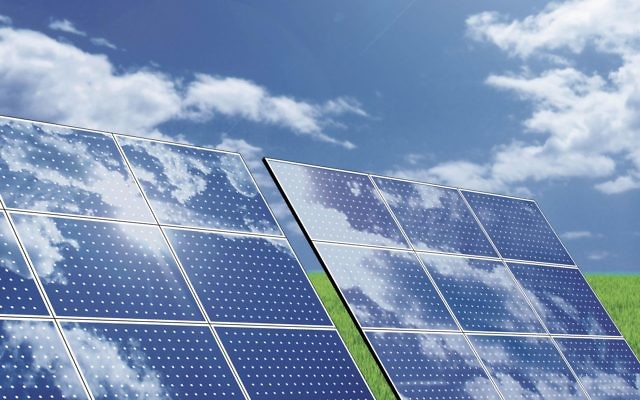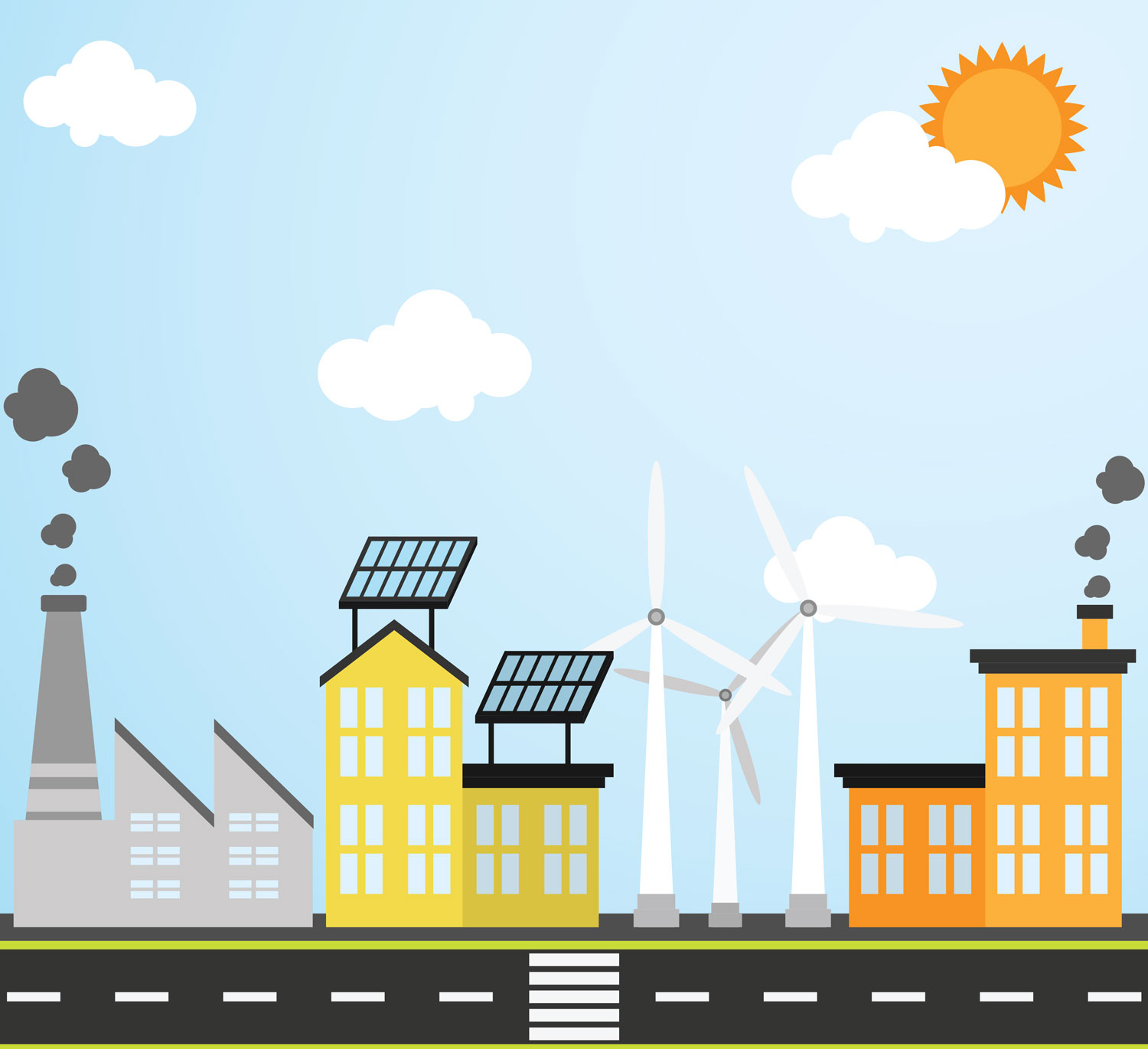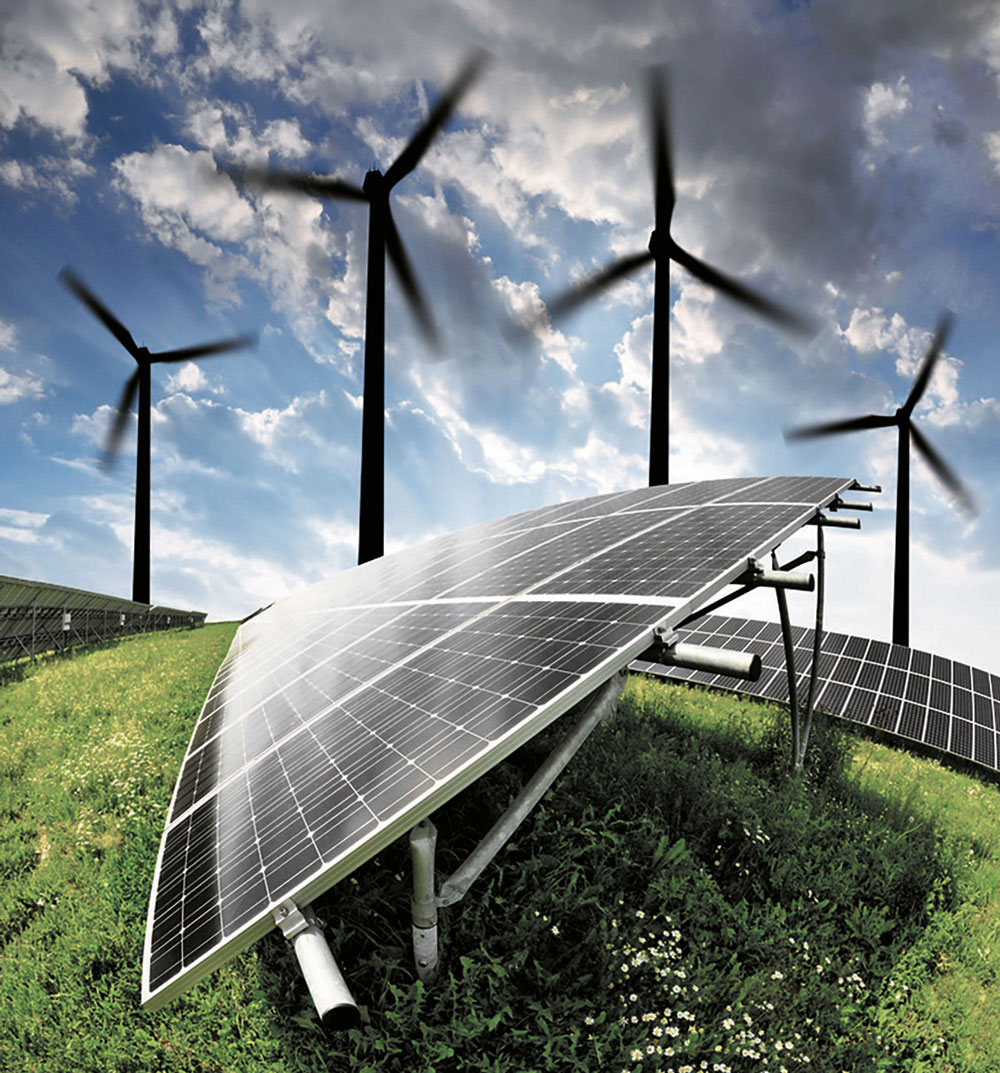The dawn of the solar age – part 2
As stated in Part 1, climate change is the greatest problem mankind has ever faced. However, it is also the greatest investment opportunity we will ever be presented with.
PETER LYNCH
As stated in Part 1, climate change is the greatest problem mankind has ever faced. However, it is also the greatest investment opportunity we will ever be presented with.
The benefits of addressing climate change are overwhelmingly positive while the costs of not addressing climate change are simply catastrophic. The accompanying investment opportunities are also numerous and for the most part, not yet generally known in the mainstream investment community.
In the investment world there are two sides to opportunity:
1. Avoiding losing stocks and market segments and
2. Picking good stocks and market segments
In this article, I will focus on avoiding the areas that will be adversely affected by climate change and each individual investor can decide for themselves whether to just avoid these areas or take an opportunity to short stocks.
The Three primary areas that benefit by addressing climate change are:
1. Financial
2. Economic
3. Societal
Financial Benefits
Significantly lower initial costs for construction of renewable plants and much lower cash flow risk due to the very short construction times (months vs five to 10 years) compared to fossil fuel plants and/or nuclear plants. In addition, there are no longer term catastrophic risks (covered in next section) that are involved in renewable power facilities.
Economic
More jobs, cheaper power, and far more reliable power
Societal
Clean air, clean water and dramatic decreases in healthcare expenses. In addition, distributed renewable power also is not a national security risk as foreign sources of oil are. Renewables actually enhance our energy independence, increase our resiliency and consequently strengthen our National Security.
“The United States has for decades been undermining the foundations of its own strength. It has gradually built up an energy system prone to sudden, massive failures with catastrophic consequences. The energy that runs America is brittle—easily shattered by accident or malice. That fragility frustrates the efforts of our Armed Forces to defend a nation that literally can be turned off by a handful of people. It poses, indeed, a grave and growing threat to national security, life, and liberty.” Amory Lovins – Brittle Power
Significant financial risks possible by constructing a fossil fuel plant today
The long-term catastrophic risks associated with building a fossil fuel or nuclear plant are, in my opinion, far too great a financial risk to even undertake. Listed below are a number of the most significant ones – any one of which would have a significant negative effect on the stock of the parent company.
- Lack of future electricity demand due to commercial and residential efficiency gains and resultant shortfall of operating cash flow necessary to run large fossil fuel plants profitably. It is financially foolhardy to build a plant today that will take at least five years to come on line, when there is a real risk that when completed the demand for its output will not be there.
“Total U.S. electricity sales have declined in four of the past five years, and are on track to continue to decline in 2015”. U.S Energy Information Administration
- Stranded assets such as coal or oil reserves in the ground that may not be allowed to leave the ground because of their adverse impact on the climate. This would have a huge negative effect on many companies balance sheet and I am sure the common stock would reflect this.
“While the global community works to eliminate the use of fossil fuels, it makes little sense—financially or ethically—to continue holding investments in these companies. There is no sane rationale for companies to continue to explore for new sources of hydrocarbons. The science and intent enunciated by the Paris agreement cannot be more clear: far from finding additional sources of fossil fuels, we must keep most of the already discovered reserves in the ground if there is any hope for human and natural ecosystems to survive and thrive in the decades ahead.” The Rockefeller Family Trust
- Power Plant Inability to operate due to lack of water or too warm water in the case of nuclear reactors.
“Coal plants utilize 1,100 gals of water per megawatt hour, nuclear plants 800 gallons, natural gas 300 gallons and solar utilizes zero gallons.” Union of Concerned Scientists
There are growing water shortages all around the US and the world and the situation will only get worse, especially in California and the other western states. This is a problem you can ignore for a while, but you cannot hide from for long.
An example of this situation actually occurring happened in the state of Connecticut which is very close to where I live in the New York City area. In the summer of 2014, two nuclear power plants in the state of Connecticut had to shut down because the water that they used to cool the plant came from the Connecticut River. The temperature of the river water was greater than 75 degrees and as a result, was not able to supply enough cooling to operate the plant safely and the plant had to be shut down.
- Catastrophic accidents at old outdated nuclear plants, a situation that most people are very aware of the possibility of. There are numerous examples of this, with the latest being the terrible accident in Japan. This is a very serious situation and considering the danger, the astronomical cost of a nuclear plant compared to any other form of power generation there is zero financial justification for constructing new units.
“When there is a huge nuclear leak/accident it is catastrophic with huge financial and health ramifications. When there is a huge solar spill it is called – “A nice day” Anonymous
Economics will be the “key” to accelerating the rate of Energy Transformation
Even though it is obvious to people who are focused on the energy situation that the end of the age of fossil fuel is approaching most people and investors are not really aware of how close this shift is and how fast this dramatic change is approaching. Maybe this is because investors focus on numbers and rate of return – without looking up at the bigger picture, it is impossible to know for sure. However, most of the numbers to date that investor and financiers have been utilising are incomplete numbers. When doing a complete and credible analysis one has to count all the costs. This would include the direct costs (initial construction cost of the power plant and cost to run the plant on an annual basis) and also the indirect costs (true cost of subsidies, societal costs and widespread health costs). In most cases, if calculated properly the indirect costs are actually larger!
For example, in Australia the battery market for home solar systems is set to explode: Morgan Stanley, the investment bank predicts one million Australian households will adopt battery storage over the next four years…
When it becomes obvious to investors that they are truly being misled by not being informed about indirect costs and their huge risks, the growth of the solar industry will accelerate even more dramatically. There is currently a serious push by large institutional investors (with trillions of dollars under management) to have the SEC force large companies to document the risks of climate change and especially the impact of a large percentage of their assets being devalued because they will be unable to access them due to cost of the environmental consequences.
The best way to illustrate the future growth potential and where I think we currently stand is the old hockey stick analogy used in venture capital.
It is my opinion that we are currently at the point on the stick when the acceleration of slope is just starting to turn up. From here things will accelerate at an even faster rate.
Energy Sector Paradigm Shift
The current shift in the energy sector is from the old centralised model, where a central power plant distributes its power to adjacent users of power to the future distributed energy model where energy is produced locally via renewable sources and utilised locally.
What is interesting is that this exact transition has happened a few decades ago in the computer industry when the industry mostly shifted from centralised computing in data centres to a fully distributed system where computing was shifted to laptops, tablets and even people’s wrists.
As a result of this current shift in the energy sector, there will be numerous investment opportunities that will present themselves now and in the future.
In the last article, I covered some of my favorite stocks in the solar, wind and investment infrastructure.
In this article, I will cover a few more areas that will also present opportunities as the shift accelerates. These opportunities will be focused on areas to avoid and in cases where investors are comfortable they may be opportunities to short stocks.
Remember that in this unique kind of historical situation (paradigm shift in energy sector) stocks will fall and investors will say – “they are at a bottom and they always come back” that likely has been true, in the past. But these historical “truisms” will not be valid in a situation like we are approaching in the energy sector.
Keeping this unique shift in mind, I wanted to remind readers of the wise investment words of Warren Buffet.
The two most important rules of investment success are:
1. Never lose money
2. Never forget rule # 1!
One of the key takeaways from this simple quote is that one way to break BOTH those rules is to invest in companies whose stock has the potential to have a sudden significant decline.
Areas to watch out for are industries that are potentially in terminal decline (#1) or are related to companies in decline (#2 and #3) and those related directly to the paradigm shift in energy (#4).
Examples are:
1. Oil, Gas and Coal companies
2. US Oil Refiners
3. Banks with overweigh loans to either either area #1 or #2
4. Utilities
1. Oil, Gas and Coal Companies
Oil, gas and coal companies have been in decline for a number of years, with the coal companies faring by far the worst (down on average over 80 per cent) – this is an area to avoid. I think we will see this year or next a significant number of bankruptcies in all three areas. Apparently I am not the only one who has this opinion.
“A report, published Tuesday 16 March 2016 by consulting and business services firm Deloitte, looked at more than 500 oil and natural gas exploration and production companies worldwide. It found that 175 of the companies — or nearly 35 per cent — were at high risk of going bankrupt, due largely to low oil prices. Together, these companies have more than $150 billion in debt”.
2. US Oil Refiners
This situation is based upon a ‘loophole” that may not be widely known at this time. Historically, West Texas Crude (WTI) always traded at a $2-$3 dollar premium to the international standard “Brent Crude”. Because of the recent shale oil explosion in the US the price of WTI dropped dramatically at one point trading 25 per cent less than Brent. Since the 1970s there has been a ban on exporting crude oil so legally it had to be processed in a US refinery prior to export. As a result, US refineries were exporting products made from significantly cheaper crude (WTI) and made a killing.
However, in December of 2115 Congress repealed the old export ban and now US Refineries could no longer make “extra profits”. I have been following a number of refinery companies and there are four that could have serious down trends in their margins and earnings as a result of this new Congressional action. Investors need to look at them for themselves – but, I think this may be a good place to start, for more aggressive investors who are knowledgeable in shorting stocks.
1. Valero Energy Corp. – VLO
2. Tesoro Corp. – TSO
3. Western Refining Inc. – WNR
4. Alon USA Energy – ALJ
3. Banks
There are a number of banks that will certainly feel the pain from the huge run up in debt in the oil and gas market sector. I would suggest to investors that this is an area to seriously avoid. As an old trader once told me –
“Don’t take unnecessary risk, everyone has limited capital but keep in mind that everyone also has unlimited opportunity”
There have also been a growing number of articles in the financial press mentioning these problems and leaving the financial and investing analysis to each reader. Regardless of how you look at it – the outlook is bad to grim.
“The number of energy loans labeled as “classified,” or in danger of default, is on course to extend above 50 per cent this year at several major banks, including Wells Fargo & Co. and Comerica Inc., according to bankers and others in the industry”.
“Regional banks that lent heavily to energy companies have the most concentrated exposure. While the biggest U.S. banks have already set aside hundreds of millions of dollars for potential losses, their lending to the sector is a smaller part of their overall business. About 1.5 per cent to 3 per cent of the loan portfolios of Bank of America Corp., Citigroup Inc., J.P. Morgan Chase & Co. and Wells Fargo were outstanding to the oil-and-gas sector in January, according to Goldman Sachs Group Inc. and Evercore ISI” – Morningstar 3-24-2016
Three regional banks have made very significant loans in this sector. They have very high concentrations – 15 per cent to 20 per cent of their loan portfolios in oil and gas stocks which is certainly not sound financial diversification of a loan portfolio. They also show tiny reserves against loan losses averaging only 1.5%. This seems insanely low in a time when energy prices have dropped over 50 per cent.
1. BOK Financial – BOKF
2. Cullen/Frost Bankers – CFR
3. Zions Bancorporation – ZION
If only 10 per cent of these banks’s loans go bad it would wipe out 100 per cent of their profits. A number of analysts think these banks will face anywhere from 15 per cent to 25 per cent in bad debt for their energy-related loans, anywhere near those numbers would have a very significant negative impact on their respective stocks.
All three of these banks are in negative trends and their relative strength to the market has turned negative, not good signs and maybe, just maybe harbingers of negative surprises?
4. Utilities
Utilities are a bit different. They are all fighting to maintain their monopolies against a number of relentless adversaries: energy efficiency, renewables wind and solar, rapidly developing battery technology and newly commercial highly efficient HVDC (High Voltage DC) cables which allows the far cheaper long transmission of DC power (the power that comes off of solar and wind) to all parts of the country.
Energy Efficiency – Energy efficiency is a “great” investment. The returns are superior to almost any other investments. For example, recently a very large total energy efficiency renovation of the Empire State Building in New York City was done. It cost roughly $60M. The payback was roughly $15 to $20 million per year in energy savings – I would classify that as a “no brainer”, but it illustrates the enormous financial returns companies and individuals can garner from very simple energy efficiency modifications. This has and will have an enormous effect on reducing demand for electricity from the local utility and will eventually start to have serious ramifications for the utilities cash flow.
Wind and Solar – Wind and Solar are also chipping away at a utilities revenue streams, with solar especially, severely impacting the utilities most profitable billing segment – the peak power time, roughly 11am to 3pm in the summers to handle air conditioning loads. This time period is, in many cases entirely covered by solar peak output. In Germany, the impact of this caused the price of energy to actually go negative at times during the day, totally wiping out utility revenues. This eventually impacted the common stock of the four major German utilities and they dropped anywhere from 60 per cent to 80 per cent. In the US there has been nothing like the severity of the Germany experience, but it will be coming; despite industry denials and fighting the solar industry as hard as they can, when it does happen the utility sector stock will take a serious beating.
Battery Power – Batteries play a very small role at the present time, but developments are advancing all around the world at an accelerating pace. Within three to five years battery storage with solar systems will be economic in most places worldwide, further eroding the utilities revenue base.
For example, in Australia the battery market for home solar systems is set to explode:
Morgan Stanley, the investment bank predicts one million Australian households will adopt battery storage over the next four years, and says the broader energy market in Australia still underestimates what’s about to hit them. Many of the existing coal-fired generators, the big networks and retailers have sought to downplay the prospect of battery storage in recent weeks and months, telling investors and conference gatherings that battery storage are still “un-economic” and that installation rates will be slower than thought.
However, the existing growth trends show much faster growth and, once again, the existing power structure fights as long as it can, denying reality and then comes the inevitable sudden collapse, as happened with coal based utilities in Germany.
HVDC – High Voltage Direct Current cables are another technology that has reached commercial readiness. HVDC has the power to truly disrupt the existing centralised energy generation model, by eliminating one of the most powerful arguments against solar and wind power. This is the argument that these sources are fine, but they are variable and not reliable plus, solar does not work at night.
HVDC will allow enormous amounts of power to be transmitted thousands of miles, cheaply with very little transmission losses. This will also allow far less battery power than first thought – this means that the transition will happen faster and when and where the batteries will be needed; they will be more advanced than those of today.
With a new grid based upon HVDC cables and networks we can power the east coast from windmills in California and the Great Plains and make up the difference remaining with strategically placed battery systems and far lower demand via well thought out energy efficiency projects.
Not all utilities will remain “asleep at the wheel” but a large number will, in my opinion to the very end. At that time, the utility sector, long touted historically as the market sector where investors can run to as a safe haven will end up being anything but a safe place for your investment dollars.
Renewable Energy and Related Stocks
In the next article, I will address all of the potential investment sectors that would be candidates for inclusion on an Equity Watch List.
I use a watch list to make a list of companies I like for one reason or another and then I watch then until I think that the technical signs are telling me that the stock is ready to be bought.
I learned (the hard way) a long time ago that you can have a great company that is NOT a great stock. It may be a great company but it is not a potentially good stock until the market tells you it is ready to be bought.
Below are the 10 segments of the Renewable Energy (or related) stock universe that I will cover in the next article. I will comment on what they do and where I think they rank in terms of current technical strength – I would think that the strongest stocks would be likely candidates for inclusion in a watch list.
Renewable Energy related Market Segments:
- Batteries
- American Solar Companies
- Chinese Solar Companies
- Japanese Solar Companies
- Community Solar
- Concentrated Solar Power (CSP)
- Electric Vehicles
- High Voltage Direct Current (HVDC)
- Micro Grid’s
- Wind Companies







comments